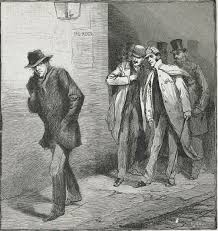Unraveling the Mystery of Jack the Ripper

Introduction to Jack the Ripper
Jack the Ripper remains one of the most notorious figures in criminal history, captivating the public’s imagination since the autumn of 1888. Operating in the Whitechapel district of London, this unidentified serial killer was responsible for a series of gruesome murders that targeted women, predominantly those engaged in prostitution. The significance of Jack the Ripper lies not only in the heinous nature of the crimes but also in the societal impact they had at the time, highlighting issues of poverty, gender, and policing in Victorian England.
The Murders
Between August and November of 1888, five canonical victims are most commonly associated with the Ripper: Mary Ann Nichols, Annie Chapman, Elizabeth Stride, Catherine Eddowes, and Mary Jane Kelly. Each murder displayed a brutal level of violence, with significant abdominal mutilations and organ removal, leading to widespread public hysteria and media sensationalism. The press played a vital role in shaping the narrative of Jack the Ripper, stoking fears and intrigue, while also creating an early form of tabloid journalism that would heavily influence public perception.
Investigation and Public Reaction
Despite various investigations by the police, the true identity of Jack the Ripper was never revealed, leaving the case officially unsolved. The Metropolitan Police faced immense scrutiny for their inability to apprehend the killer, leading to public outcry and giving rise to numerous conspiracy theories and suspects over the decades. The police received a series of taunting letters, including the infamous “Dear Boss” letter signed “Jack the Ripper,” which further taunted law enforcement and the public. This led to a sensationalised media frenzy, embedding the Ripper’s tale firmly in popular culture.
Legacy and Conclusion
Jack the Ripper’s legacy continues to fascinate and horrify, spawning countless theories, books, films, and even tours that explore the streets of Whitechapel. The allure of the mystery surrounding his identity, coupled with the shocking nature of the crimes, has ensured that Jack the Ripper remains a focal point in the study of criminal psychology and criminal justice reform. As investigations and interest persist, questions surrounding societal responses to crime and the treatment of women in society remain relevant, making Jack the Ripper a case study that transcends time. The mystery of Jack the Ripper serves as a reminder of the darker sides of human nature and the importance of addressing societal issues that give rise to such tragic events.
